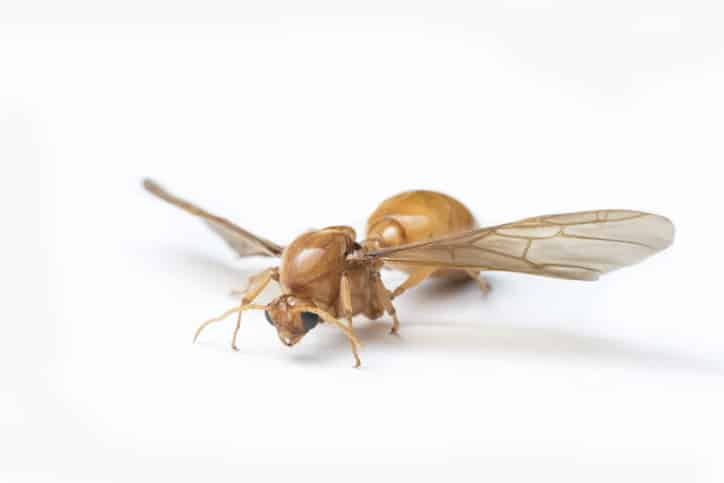Author: Kurt Treftz, Cascade Pest Control
Are you seeing wood or structural damage in your home? Are you confused about what pest to look for as a culprit? It could be that you’re suffering from termite or carpenter ant damage. Both of these pests are notorious for damaging wood in various places in your home, but it’s important to know which one you’re dealing with, as the pest control or extermination processes look very different for each one. Luckily, there are key ways you can tell them apart on your own before calling a professional pest control company in to finish the job.
Physical Differences Between Ants & Termites

Coloring
Carpenter ants are a similar color to normal ants you might see around your home–they’re a reddish brown or otherwise dark colored. They can be found while out foraging for food outside of their nests, while termites don’t leave and are therefore a white, pale, milky color. Termites avoid light and are therefore paler in color than ants.
Wings

Carpenter ant wings, on the other hand, are more proportional to their bodies and have different sized wings in the front part of their bodies than in the back. The back, hind wings are shorter than the front ones. Ant wings don’t typically fall off, either, so you won’t see any tell-tale shedding from near their nests.
Body Shape & Antennae
The abdomen area is where you’ll see a lot of difference between carpenter ants and termites. A termite’s abdomen has no defined waist, or it doesn’t taper in the middle, so it’s more rectangular. A carpenter ants’ abdomen is narrow, and they have very defined waists like most ants.
The antennae shape of both pests is also different. They both use their antennae as feelers, but ant antennae are bent and elbow-shaped, whereas termite antennae are straight and beaded. These varying features can be helpful to determine on-site what you’re dealing with and be able to start the appropriate pest control treatment or extermination effectively.
Termite & Ant Behavioral Differences
If you’re unable to find live insects in or around the area that’s damaged, don’t worry. You can still tell these pests apart based on how they’ve interacted with the wood and what type of damage you’re seeing.
Termites are definitely harder to see or find unless you break into their nests. They leave little to no wood-shavings as signals because they eat the wood they nest into. They will chew themselves a nest and continue to literally eat away at the wood there, which is why a termite infestation can be so detrimental if it goes unchecked.
Termites also create mud tunnels within the wood they inhabit to be able to travel around easier. The ragged, dirt-caked tunnels they create are very different from the smooth, clean tunnels that carpenter ants create.
Carpenter ants drill through wood without consuming it for the sole purpose of excavating their nests, which usually target moist, damp, or pre-damaged wood. In this respect, carpenter ants do create wood shavings as waste, since they aren’t consuming the wood as they go, and still need to find a way out to forage for food.
So if you see wood shavings on the ground around the foundation of your structure, you’re dealing with carpenter ants as opposed to termites. If upon inspection the damaged wood is quite ragged and caked with mud, you’ve got termites on your hands. Either way, it’s important to call a professional pest control service to help get your infestation under control and help you repair the damage to your home or business.
Call Cascade Pest Control today at 888-989-8979 for termite or carpenter ant extermination!
